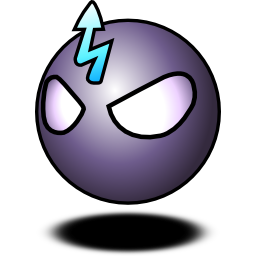I saw a blog post on IGN today: 4 reasons why the Nintendo Wii U will fail by Ian Fisch. I won’t comment on the WiiU, because I was one of the people who said the Wii was going to flop and man oh man was I ever off the mark on that one. But I did want to highlight a particular chunk of his post:
When people think of the massive success of the Nintendo Wii, they usually think of middle-aged moms playing Wii Fit, and senior citizens playing Wii Sports bowling at the retirement home. Indeed, the success of the Wii, much like the success of the Nintendo DS was due, in a large part, to casual gamers. We tend to forget that, originally, the excitement for the Wii was at a fever pitch among hardcore gamers. If you were a hardcore gamer then, you might remember sharing Eric Cartman's excitement over the potential of Wii's "motion control controls." It was hardcore gamers that gave the Wii its terrific launch. For about a year and a half, hardcore gamers were as enthusiastic about the Wii as their out-of-shape mothers soon would be. Of course, once hardcore gamers discovered the severe limitations of the Wii's motion controls, the system became little more than a dust collector. The Wii U will not get this initial surge of excitement from hardcore gamers. The original Wii tantilized the hardcore set with the (false) promise of a new level of immersion - a step toward virtual reality.
I currently work for the BLAM Lab at Johns Hopkins University, which is part of the Department of Neurology. I helped found a group here called Kata. The Kata Project exists for a lot of reasons, but this idea is really our heart and soul:
In Japanese language, kata (though written as 方) is a frequently-used suffix meaning “way of doing,” with emphasis on the form and order of the process. Other meanings are “training method” and “formal exercise.” The goal of a painter’s practicing, for example, is to merge his consciousness with his brush; the potter’s with his clay; the garden designer’s with the materials of the garden. Once such mastery is achieved, the theory goes, the doing of a thing perfectly is as easy as thinking it.
I’m doing a rich mix of work here, centered around game development not only for medical and scientific research purposes but also commercial production. The key point, though, is that everything we do is centered around the study of biological motion and what it means for games. We’ve got touch, Wii, PS Move, or Kinect, Leap, or whatever else is coming down the pipeline, and I don’t feel that the potential of any of those devices has really been explored properly. The Wii implied something that it turned out not to be, sadly. Motion control itself, combined with game design that really focuses on using it in new and interesting ways, has a very distinct future separate from what we’ve got today. Fruit Ninja is an early expression of it, I think. Of course I believe that we’ll be the ones to crack the code, but no matter how it happens I find it extremely interesting to observe what people are doing with the rich data we can get out of motion control systems. So far Kinect and most iPad games seem to be an expression of how much data we can throw away, instead. That needs to change.
 Promit's Ventspace
Promit's Ventspace
Comments